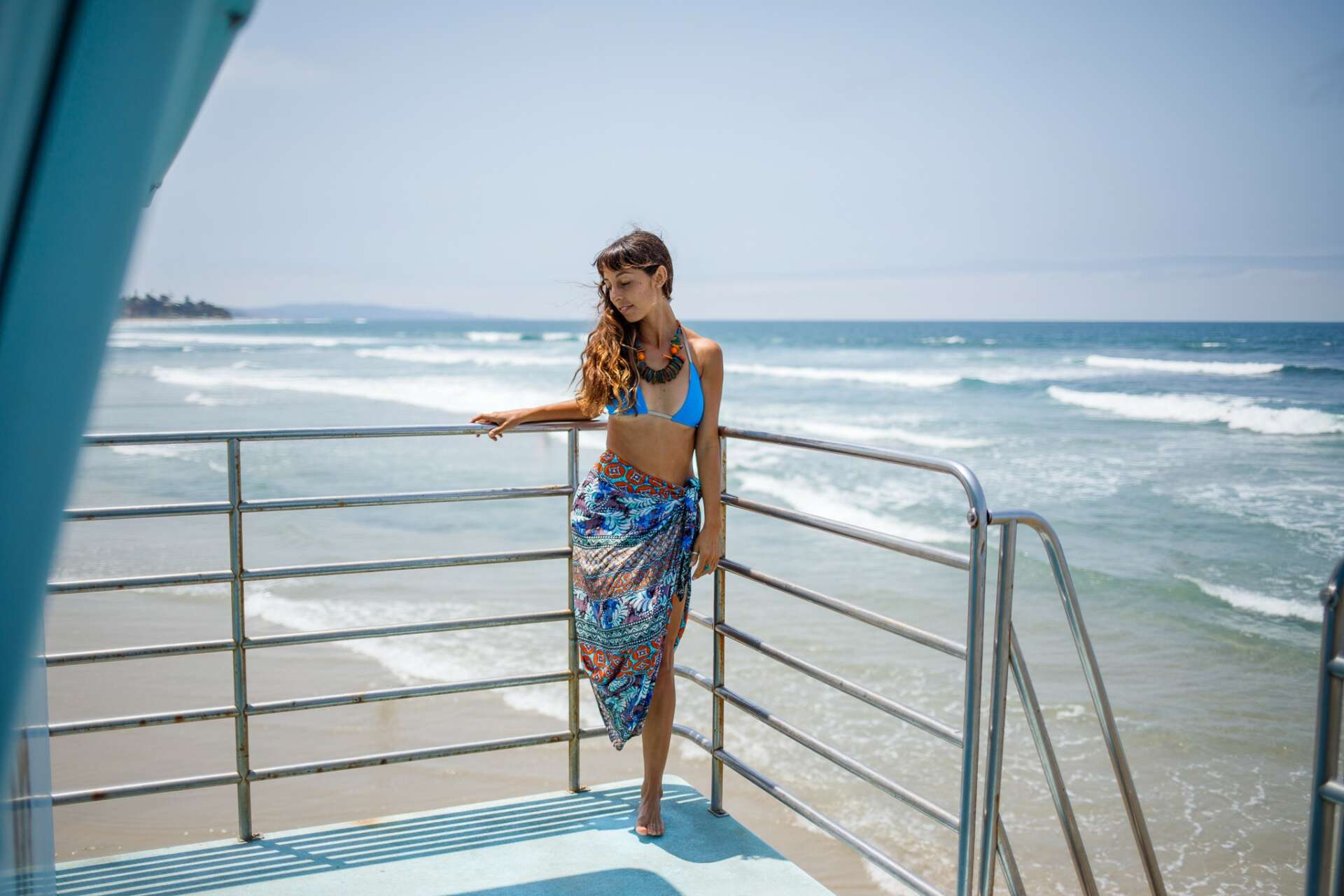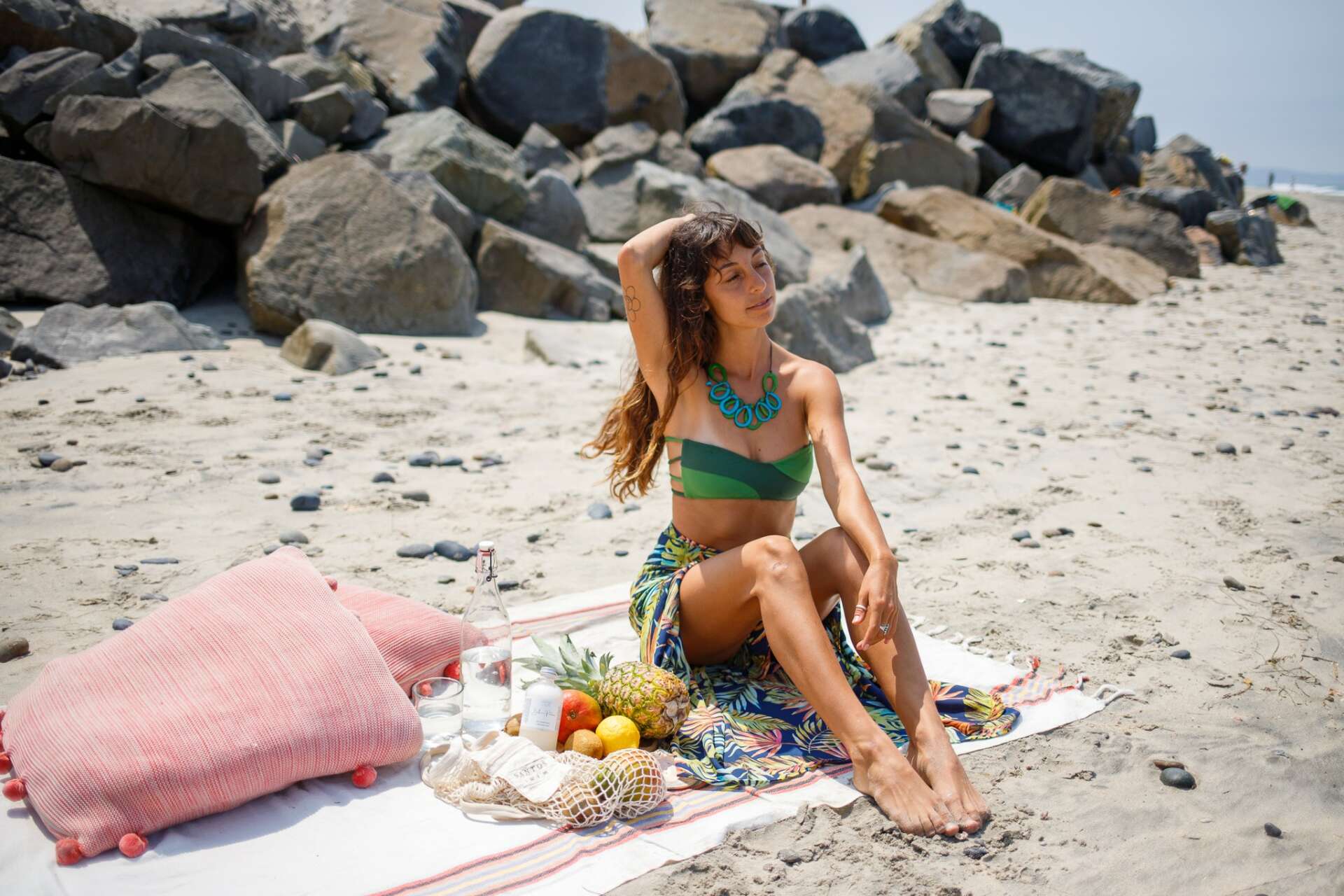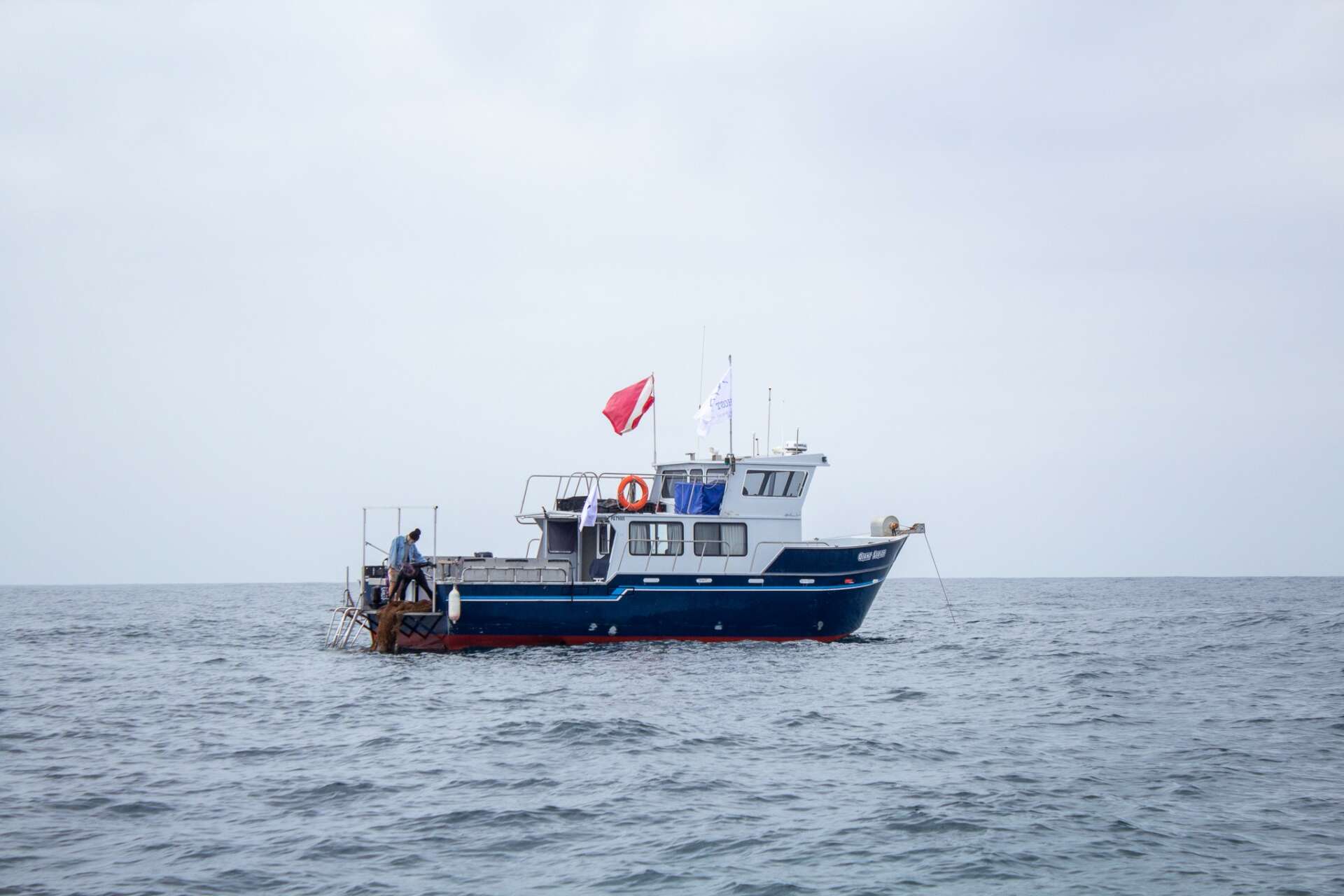We’re excited to introduce you to the always interesting and insightful Hannah McDermott.. We hope you’ll enjoy our conversation with Hannah below.
Hannah, thanks for taking the time to share your stories with us today What’s the backstory behind how you came up with the idea for your business?
The concept for my swimwear designs came about during a 6-month travel period right after I quit my job. I had an idea for a sustainable swimwear line but didn’t want to create something simply for the sake of creating it. I knew that I needed to get specific and think about how my products could serve a greater purpose.
I wanted to seek some fresh inspiration and get back in touch with my creative side after being in a sales role for a few years. I ended my lease, sold most of my belongings, and bought a one-way ticket to Bali to travel with my mom and two sisters. I immediately fell in love with the island, but the environmental impact of growing tourism was apparent in the form of plastic waste and trash littered about.
After two magical months in Bali, we headed to Singapore together before parting ways as I started my first solo travel adventure. I had downsized my belongings into a backpack and my favorite carpet bag for this trip. It was such a liberating experience and I was constantly reminded of the importance of quality over quantity. I traveled through Thailand, Australia, and New Zealand with these two bags – taking in all the inspiration I could.
I wanted my first collection to reflect the beautiful Indonesian island that inspired me so much, while also being mindful with my creations. I thought back to the gorgeous but trash-ridden beaches in Bali and Thailand, the sustainable practices I saw implemented in Australia and New Zealand, and my need for versatile & quality pieces while traveling for months.
This sparked the idea for an ethically-made, multifunctional swimwear line with styles that you could wear beyond just the beach. Meaning the suits could be worn multiple ways, reversed or as yoga tops & bodysuits. It was also important that these styles were timeless, would last season after season, and were made with sustainable materials.
It seemed like a tall order, but I was determined to see it through and that’s how Santos Swim was born.


Great, appreciate you sharing that with us. Before we ask you to share more of your insights, can you take a moment to introduce yourself and how you got to where you are today to our readers.
Growing up by the beach in Southern California, I pretty much lived in a swimsuit and the ocean was (and still is) my favorite place to be. I was taught the importance of preserving our coastlines and that we should always leave the beach cleaner than we found it. But beyond that, I didn’t really understand the true impacts our daily lives had on our planet.
During college, I started working for Tesla – selling cars when their first sedan was first introduced to the market. Electric cars weren’t the norm at this time and I learned everything I could about clean energy & sustainable transportation. This opened my eyes to a broader view of sustainability and I started to evaluate other areas of my life to see where I could minimize impacts.
After graduating, I continued working at Tesla for another year or so, until I decided I was ready to make a different kind of change. I wanted to find a way to merge my creativity, love for the ocean, and newfound passion for sustainability. I landed on the idea of launching a conscious swimwear brand made ethically and using recycled materials.
Fashion is one of the most polluting industries on the planet, but until the past few years, has not been talked about much in mainstream media. The fashion industry isn’t going away, but we can’t keep mass-producing cheap items that ultimately just end up in landfills. Not to mention the pollution and wage theft that is all too prominent in fashion manufacturing. The fashion industry needs to do better as a whole.
In addition to ensuring my supply chain was ethical, I wanted to create a purpose-driven business from the very start. So I partnered with Healthy Seas, an organization dedicated to removing ghost fishing nets from our oceans to be transformed into new material and used in products like ours. A percentage of each sale is donated to further support their mission and educate others about harmful marine pollution.
For some customers, a Santos Swim piece is the first sustainable fashion item they’ve ever purchased. My hope is that this inspires them to continue on their sustainable living journey, asking brands to share who made their clothes, if garment workers were paid a living wage and what materials were used. By living consciously, we can become more aware of our impacts on the planet and advocate for policy changes on a larger scale.


Can you talk to us about manufacturing? How’d you figure it all out? We’d love to hear the story.
I didn’t have a fashion background or any experience with sewn product manufacturing before deciding to try my hand at launching a swimwear brand. I come from a marketing, sales, and graphic design background – with no sewing experience beyond necessary patchwork.
So I started my search online and found a one-stop shop manufacturer based in Bali specializing exclusively in swimwear. They promised that they could help with the entire process. Easy enough, right?
I signed an agreement before quickly sending them my designs, spec sheets, and fabric choices. Then they got to work on creating my first samples. Everything seemed to be going great until I took a trip to Bali to check on the progress and quickly realized that things weren’t what they seemed.
They had outsourced work to other factories in the area and wouldn’t share where the suits were actually being manufactured. That was a huge red flag because I couldn’t guarantee that the suits were ethically sewn or that the workers were being treated fairly.
Paired with the fact that my samples had some glaring modifications that were very different from my original designs, I realized that this relationship wasn’t going to work out. I returned home empty-handed and could only wait for the second round of samples to come in. But I knew I needed to find a new manufacturer ASAP.
This initial experience made me realize how hard it is to break into the fashion industry as a new designer. I didn’t understand the manufacturing process, industry lingo, or general timelines – despite hours of online research. I really needed a complete education in sustainable fashion production, but I wasn’t sure where to look.
Feeling pretty defeated, I turned back to Google to search for anything to help me get to the next step. I finally stumbled upon a program called Factory45 – an online accelerator for sustainable fashion entrepreneurs. It advertised that anyone with the dream and drive to launch their own ethical fashion brand was welcome – no fashion background needed.
After reading through the curriculum, I realized that this was exactly what I needed. Factory45 gives entrepreneurs an education in product development/manufacturing, vetted contacts to reach out to, marketing/launch strategies, and personalized support throughout the process. I filled out an application and crossed my fingers.
Thankfully I was accepted to the program and I felt like I was finally back on track. A few months later, I finally understood the process and exactly what to look for in a potential manufacturing partner. I restarted my search and was able to interview another Bali-based manufacturer and I ultimately moved forward with producing my first collection through them.
My biggest takeaway from the whole experience was the importance of being hands-on when manufacturing a new product. You can always outsource and hire someone to do things for you, but without a complete understanding of the process yourself, you’ll always have to rely on others moving forward. This can also lead to a lack of traceability in your supply chain which is crucial for running an ethical business.
How’d you think through whether to sell directly on your own site or through a platform like Amazon, Etsy, Cratejoy, etc.
I currently sell directly on my own Shopify website and at local, in-person events. This gives more creative control over the look and feel of the website, the ability to share the brand story, and avoids high seller fees from other marketplaces.
I know Amazon can be a good option for some small businesses to reach a network of new customers, but unfortunately, their unethical practices actually end up hurting a lot of small businesses.
They’re known for ripping off products and selling them at a much lower price, driving the original producers out of the market. Amazon sellers are also dependent on algorithm changes, review numbers, and other factors to have visibility.
For my business, the added traffic that I would get from listing products on Amazon isn’t worth being associated with their platform or business practices.
However, I know that not all businesses can make that choice since Amazon dominates the marketplace model. So hopefully, there will be more ethical, seller-friendly marketplaces in the coming years!
Contact Info:
- Website: www.santosswim.com
- Instagram: https://www.instagram.com/santos_swim/
- Facebook: https://www.facebook.com/santosswimofficial/
- Other: TikTok: https://www.tiktok.com/@santos_swim
Image Credits
Robyn Orenstein


